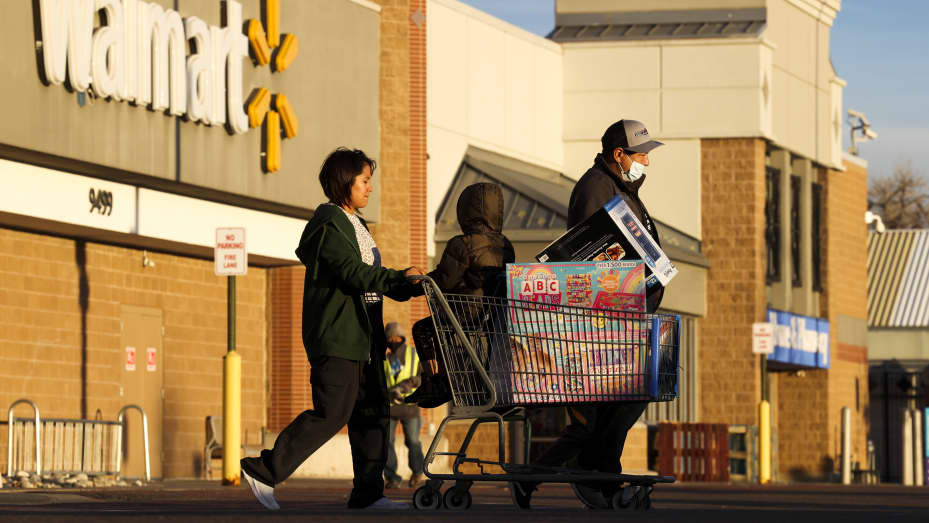My Writings. My Thoughts.
Tuesday January 25, 2002
// January 25th, 2022 // Comments Off on Tuesday January 25, 2002 // Daily News
S&P 500 futures slide by more than 1% as market’s wild ride continues
U.S. stock futures fell Tuesday as market volatility continued after the major indexes on Monday notched one of the biggest comebacks in history.
Futures contracts tied to the Dow Jones Industrial Average lost about 280 points, or 0.8%. S&P 500 futures dropped 1.6%, while Nasdaq 100 futures fell 2.2%.
The Dow on Monday rallied from a more than 1,100-point loss to close up higher and snap a six-day losing streak. The Nasdaq Composite reversed a 4.9% decline from earlier in the day to finish positive — its biggest comeback since 2008. The S&P 500 also rebounded from major losses to close up.
History shows a sharp intraday rebound for the Nasdaq Composite does not typically signal the end of the sell-off, but rather marks volatility seen at the start of a down period, according to Bespoke Investment Group analysis.
The yield on the benchmark 10-year Treasury note rose Tuesday, pressuring Nasdaq 100 futures and technology shares in the premarket.
Despite Monday’s comeback, the S&P 500 is still down 7.5% in January, its worst month since March 2020 at the onset of the pandemic.
The 10-year Treasury yield has climbed this year as the Federal Reserve tightens its monetary policy and prepares to hike interest rates. Investors have rotated out of high-growth areas of the market in favor of safer bets. The Nasdaq Composite is in correction territory, down 14% from its intraday record.
“Downside risks from monetary tightening are higher vs history. The pain has so far been localized to high valuation stocks, but signs of a broader risk-off are brewing,” Barclays’ Maneesh Deshpande said in a note Tuesday.
Investors are eyeing the Fed’s two-day policy meeting beginning Tuesday for updates on when the central bank will raise interest rates and by how much. Market participants expect the Fed to signal a rate hike as soon as March and more policy tightening on the table to address high inflation.
Friday January 14, 2022
// January 14th, 2022 // Comments Off on Friday January 14, 2022 // Daily News
Retail sales dropped 1.9% in December as higher prices caused consumers to curb spending
- Retail sales declined 1.9% in December, much worse than the forecast for a 0.1% drop.
- Weak online sales were responsible for much of the slide along with a fall in spending at bars and restaurants.
- Import prices declined on the month, the first decrease since August.

A family of shoppers walk out of Walmart with a full shopping cart on November 26, 2021 in Westminster, Colorado.Michael Ciaglo | Getty Images
Retail sales fell much more than expected in December as surging prices took a big bite out of spending, the Commerce Department reported Friday.
The advance monthly sales report to close out the year showed a decline of 1.9%, considerably worse than the Dow Jones estimate for just a 0.1% drop.
Excluding autos, sales fell 2.3%, a number that also fell well short of expectations for a 0.3% rise.
In addition to the weak December numbers, the November gain was revised down to 0.2% from the initially reported 0.3% increase.
Considering that the sales numbers are not adjusted for inflation, the data point to a slow ending to what had otherwise been a strong 2021 in which sales rose 16.9% from the pandemic-scarred 2020.
The consumer price index rose 0.5% for the month, bringing the year-over-year gain to 7%, the highest since June 1982. Wholesale price also rose, climbing 9.7% in the 12-month period for the biggest calendar-year rise since data was kept going back to 2010.
Online spending took the biggest hit as a share of overall spending, with nonstore retailers reporting a plunge of 8.7% for the month. Furniture and home furnishing sales declined 5.5% and sporting goods, music and book stores saw a 4.3% drop.
Surging omicron cases exacted damage across the board as consumer activity waned.
Restaurants and bars, which posted a 41.3% annual gain in 2021 to lead all categories, saw a decline of 0.8% for the month. Gas stations were a close second for the year, with a 41% surge in sales, but saw a 0.7% decrease in December as fuel costs moved lower. Gasoline prices fell 0.5% to close out a year when prices at the sump soared 49.6%.
Only two categories saw increases for the month: miscellaneous store retailers, which rose 1.8% and building materials and gardening centers, which posted a 0.9% gain.
A separate Labor Department report Friday showed import prices fell 0.2% for the month, against expectations for an increase of 0.2%, the first negative number since August and due in good part to a 6.5% fall in petroleum prices.
That number provided some hope that the inflation surge could be ebbing, though much of the move came from falling petroleum prices..
Federal Reserve officials in recent days have been stressing the importance of heading off inflation, with multiple policymakers saying they expect to start raising interest rates as soon as March. The Biden administration has joined central bank leaders in placing much of the blame for rising prices on pandemic-specific factors such as a huge demand for goods over services and supply-chain issues.
The price surge, though, has come following unprecedented levels of cash injections to the economy from both fiscal and monetary policy.
